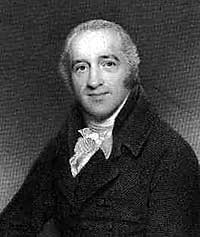Charles Simeon
| Charles Simeon | |
|---|---|

Portrait of Charles Simeon
|
|
| Born |
24 September 1759 Reading, Berkshire, England |
| Died | 13 November 1836 (aged 77) |
| Nationality | English |
| Relatives |
Sir John Simeon, 1st Baronet (brother) Sir Richard Simeon, 2nd Baronet (nephew) Sir John Simeon, 3rd Baronet (great-nephew) |
Charles Simeon (24 September 1759 – 13 November 1836), was an English evangelical clergyman.
He was born at Reading, Berkshire in 1759 and baptised in the parish church on 24 October of that year. He was the fourth and youngest son of Richard Simeon (died 1784) and Elizabeth Hutton. His eldest brother, named Richard after their father, died early. His second brother, John, entered the legal profession, became an MP and received a baronetcy. The third brother, Edward Simeon, was a director of the Bank of England.
Simeon was educated at Eton College and King's College, Cambridge. As an undergraduate at King's from 1779, brought up in the High Church tradition, he read The Whole Duty of Man and then a work by Thomas Wilson on the sacrament, and taking communion at Easter experienced a Christian conversion. In 1782 he became Fellow of King's College, and was ordained deacon, then graduating B.A. in 1783. He began as a minister as deputy to Christopher Atkinson (1754–1795), at St Edward King and Martyr, Cambridge. Atkinson introduced him to John Venn and Simeon then met Henry Venn, confirming evangelical and Calvinist views.
Simeon received the living of Holy Trinity Church, Cambridge, in 1783. He was at first unpopular, and indeed the congregation would have preferred John Hammond (died 1830), who had been curate there, and became lecturer. Services were disrupted, and he was insulted in the streets. Simeon remained there for the rest of his life, eventually with a crowded church.
Simeon died, unmarried, on 13 November 1836. His memorial by Humphrey Hopper in Holy Trinity Church (Cambridge), was described by architectural critic Nikolaus Pevsner as an "epitaph in Gothic forms."
...
Wikipedia
